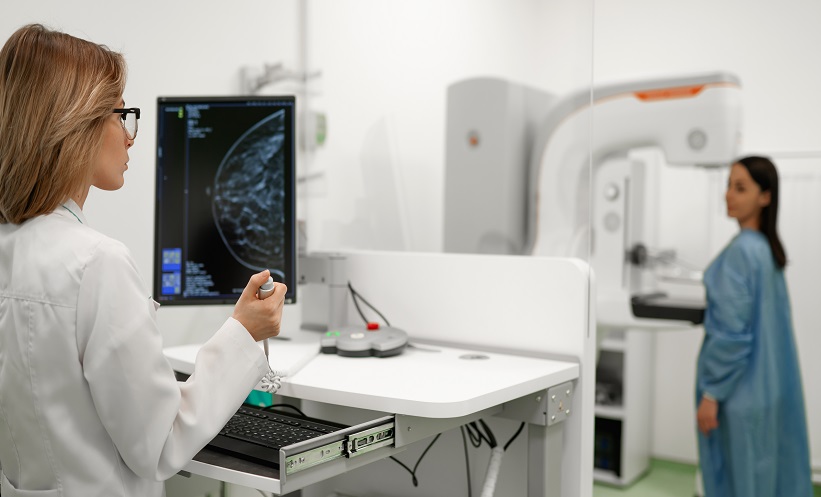EVOLUTION of technology, global availability of massive volumes of data, and progress in evidence-based clinical care have contributed to the rise of artificial intelligence (AI) in medicine. While opportunities for application of AI and machine learning are emerging across specialties and clinical services, radiology has led in this progress, with AI algorithms used for everything from scanning protocols and pathology detection, to referral systems and workflow optimisation. During the European Congress of Radiology (ECR) 2020, a ‘Meets Session’ on ‘Artificial Intelligence and the Radiographer Profession’ provided insights from several expert speakers, discussing the clinical data basis for AI, the ethical and professional considerations for its incorporation into patient care, and the role of radiographers in the AI landscape ahead.
CURRENT UNDERSTANDING
Dr Nicholas Hans Woznitza, Homerton University Hospital, London, UK, gave the opening presentation where he analysed the existing evidence-base, risks, and benefits for the use of AI in radiography and the role ahead for radiographers. He advocated for radiographers to understand AI, its development, and its use in imaging. Discussing the results of a 2019 American Society of Radiologic Technologists (ASRT) survey, Dr Hans Woznitza outlined that the majority of respondents were confident that the AI features of their imaging equipment functioned correctly and provided reliable results, despite having mixed familiarity with the features themselves. To illustrate the need for changes in AI systems to be both evidence-based and clearly articulated to radiographers and imaging healthcare professionals, Dr Hans Woznita pointed to the example of “the Boeing 737 crisis [where] modifications were made to back-end systems that weren’t communicated appropriately to pilots with devastating consequences.” When considering AI algorithms that determine radiation dose and scan time, the responsibility for delivering that dose of radiation to the patient still falls to the radiographer and radiologist. Confidence in the AI evidence-base and knowledge of the AI system are crucial parts of that responsibility, Dr Hans Woznita emphasised: “We need to be empowered with thorough evidence to inform our decision-making and to make sure our practice isn’t compromised.”
BENEFITS AND RISKS
Dr Hans Woznitza went on to discuss the benefits and limitations of AI in clinical imaging. The benefits of AI in medical imaging hinge around radiation risk. AI algorithms can help to optimise scanning protocols to minimise scanning time and radiation exposure. AI algorithms can also be useful in referral protocols and justification of scan requirement, to help reduce radiation exposure by avoiding unnecessary scanning. Reduction in scanning time has a further benefit of allowing increased patient throughput, allowing for a greater number of patients to access imaging in a timely manner. The use of AI algorithms to identify which scans are most appropriate for immediate reporting or for consideration of escalation, e.g., from chest X-ray to CT scan, can benefit both patient care and reporting radiographers, as Dr Hans Woznitza highlighted study findings that immediate reporting of imaging results reduces error rates and improves time to diagnosis.
Risks associated with the incorporation of AI in imaging practice include concerns of population-based clinical decision-making rather than individual-based care. Dr Hans Woznitza provided the example of using AI algorithms to predict nonattendance at imaging appointments and justify ‘double-booking’ to optimise workflow efficiency. This population-based strategy overlooks the reasons why patients may not attend appointments, ignoring the responsibility to engage with these patients to provide them with quality care, and risking entrenching inequalities as socioeconomic factors frequently contribute to nonattendance. Dr Hans Woznitza advocated for the evidence-based progress of AI in medical imaging, highlighting the need for radiographers’ skills and understanding of AI to progress alongside these algorithms to maintain their responsibility to patients: “Patients are at the centre of what we do; we are hoping to use AI to improve their experience, to minimise discomfort, [and] to optimise the image quality for the patient’s perspective.”
ETHICAL CONSIDERATIONS
Dr Adrian Brady, Mercy University Hospital, Cork, Ireland, gave the second presentation, discussing ethical considerations for the use of AI in imaging. Given the growth of AI in radiology, many organisations have provided guidelines on the ethical use of AI algorithms. Dr Brady noted some commonalities across these guidelines, particularly the principles ‘do no harm’, respect for human rights and freedoms, transparency and accountability, and maintenance of human-held control and responsibility. A multisociety statement ‘Ethics of Artificial Intelligence in Radiology’, published in 2019, provides international considerations for the use of AI, but Dr Brady gave an overview of some of the underpinning ethical questions.
Foundational Truth
To initially develop an AI algorithm, Dr Brady explained, requires massive amounts of validated data; however, these data must be accepted as ‘truth’ for a reliable basis for AI training. Dr Brady spoke of a New York Times article, ‘The Tedium of Teaching AI’, which described the process of training an AI algorithm to recognise polyps in colonoscopy; the human workforce labelling the images to train the algorithm was revealed as non-medical workers trained over 7 days of video calls. Alternative methods for training AI algorithms involve the use of already validated, real-world patient data, which poses confidentiality concerns. As an example for this, Dr Brady discussed a case from the USA, where a deal with a private healthcare provider gave a technology company access to tens of millions of individual health records, including all identifiable data, for the purposes of developing new health software; this deal was made without patients’ or doctors’ knowledge or consent.
Data Ownership and Privacy
The ethics of AI and data ownership are more complex in an international context, as different countries place differing degrees of importance on personal rights versus collective social welfare. Dr Brady outlined some of the global differences in data ownership: in the USA, the company performing the imaging holds the ownership of the imaging data but patients have a legal right to a copy of their data, and patient data may be retrospectively used in research without seeking specific consent; while in the European Union (EU), General Data Protection Regulation (GDPR) legislation means that patients have both ownership and control over their personal and sensitive information (medical and non-medical), and sharing or using the data requires explicit patient consent. Beyond access to data, clarification of use of data is required. The multisociety ‘Ethics of Artificial Intelligence in Radiology’ statement recommends Data Use Agreements to specifically describe every allowed use of patient data, with requirements for regular updates to reflect new uses of data and a plan for disposal of data once an agreement ends. Among the types of companies seeking access to patient data are companies that also own social media platforms, search engines, or mobile phone technology, which raises ethical concerns as they could potentially target people for advertising or extort patients over release of their medical information.
Data Bias
Data bias impairs the ethical use of AI in imaging. If the dataset used to train an algorithm does not reflect the patient population receiving the imaging using that algorithm, the bias in the foundational data may negatively affect patient care. As a result, Dr Brady believes there is an ethical duty for transparency of the clinical truth of datasets. Understanding the value of the foundational data, and the process by which the algorithm interprets these data for clinical processes, is also important for patient communication. For patients to have confidence in their care, and for clinicians to behave in an ethical manner in providing that care, AI must be well-built and well-understood. Dr Brady said: “A lot of what happens in AI happens in a ‘black box’ environment, yet we have to build in interpretability (the ability to understand what’s going on), explainability (the ability to explain what has happened), and transparency (the ability for a third party to see what’s gone on and to understand how a decision was arrived at).” Dr Brady closed his presentation with a quote from Prof Steven Hawking: “Our future is a race between the growing power of our technology and the wisdom with which we use it.”
FUTURE DIRECTIONS AND THE ROLE OF RADIOGRAPHERS
The final presentation was provided by Dr Melissa Jackowski, ASRT Past President and Immediate Past Board Chair, Garner, North Carolina, USA, who discussed future applications of AI in radiography. She highlighted the value of AI systems in supporting safety in patient care: “AI could assist the radiologic technologist with dose optimisation by facilitating the building of a personalised protocol for patients and estimating radiation risk relative to cumulative dose and patient age or other parameters.” She went on to discuss other specific applications of AI that aim to improve patient safety, including the use of neural networks to train AI systems in mapping ultra-low-dose protocols. Workflow optimisation through the use of AI could help prioritise patients based on level of emergency and appropriateness, to improve both patient safety and health service efficiency. Finally, AI used in the detection of some pathologies, such as pneumothorax on chest X-ray, can escalate imaging results to radiologists more rapidly, reducing delay in diagnosis.
Despite the capabilities of AI and potential benefits for patient safety and health service workflow, there are challenges to its incorporation into clinical practice. Dr Jackowski spoke of the limitations of machine learning, particularly as AI algorithms can only determine decisions once information reaches a ‘tipping point’ and cannot extrapolate from incomplete data or make judgement calls in the way that humans can. In addition to ethical and data concerns, Dr Jackowski addressed the challenges for medical imaging professions in developing education, training, and workplace task flows that support understanding and application of AI, and are flexible enough to evolve with this rapidly developing field. Disruption to workflow and workforces as education and training requirements shift requires support and education of the existing medical imaging workforce. To facilitate this evolution, Dr Jackowski advocated for radiographers and medical imaging professionals to lead efforts to incorporate these AI systems into clinical use, to champion the focus on quality and safety in patient care, and to encourage ethical guideline conformity across stakeholder groups. She emphasised the opportunity for radiographers and medical imaging professionals to act as “pioneers” in incorporating AI into practice: “become involved in laying the groundwork for ethical, practical, patient safety, and clinical aspects of AI in their responsibilities and for the betterment of patient care.”







